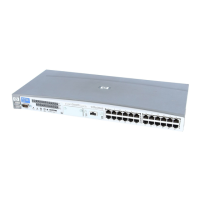the name my_SAPinstance. Then, the SAPDATA_HOME Windows registry key
on the backup system must have the value
\\mycomputer.company.com\my_SAPinstance.
If the sapbackup and sapreorg directories do not reside together, share each
directory separately and also create a separate Windows registry key on the
backup system (SAPBACKUP, SAPREORG).
• Share the Oracle home directory on the application system and specify its path
in the ORACLE_HOME Windows registry key on the backup system, similarly as
described above.
• Ensure that the BR*Tools home directory on the application system is accessible
from the backup system as follows:
\\application_system\sapmnt\SAP_SID\SYS\exe\run
TIP:
Instead of creating registry keys, you can also set the Data Protector SAP R/3 integration
environment variables (ORACLE_HOME, SAPDATA_HOME, SAPBACKUP, SAPREORG).
Choosing authentication mode
Data Protector SAP R/3 ZDB integration supports two authentication modes for
accessing Oracle databases that are used by SAP R/3:
• database authentication mode
• operating system authentication mode
With database authentication mode, you need to re-configure the SAP R/3 integration
for an SAP R/3 database with the new Oracle login information each time the
corresponding Oracle database user account changes. Such a reconfiguration is not
needed if operating system authentication mode is used.
You select the preferred authentication mode when you configure a particular SAP
R/3 database.
Configuring SAP R/3 databases
You need to provide Data Protector with the following configuration parameters:
• Oracle Server home directory
• SAP R/3 data home directory
Data Protector SAP R/3 ZDB integration182

